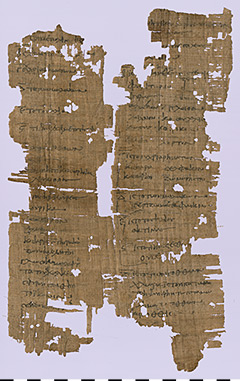-
Information
Edition Volumes
Pieces published elsewhere
- SB
- Other PublicationsActenstücke
BKU I
BKU III.1
BKU III.2
C.Ord.Ptol.
C.Pap.Hengstl
C.Pap.Jud. I
C.Pap.Jud. II
C.Pap.Jud. III
C.Ptol.Sklav. I
C.Ptol.Sklav. II
ChLA X
ChLA XI
Chrest.Mitt.
Chrest.Wilck.
Jur.Pap.
O.Taxes II
O.Varia
O.Wilck.
P.Bingen
P.Poethke
P.Scholl
PGM
SPP III
SPP VIII
SPP XX
SPP XXII
SPP III2.1
SPP III2.2
SPP III2.5
Sel.Pap. I
Sel.Pap. II
Sel.Pap. III
UPZ I
UPZ II
P. 13927: Auflistung von Theater- und Musikszenen und der jeweiligen Requisiten
Persistent URL https://berlpap.smb.museum/03946/

|
|
||||||||||||||||||||||||||||




